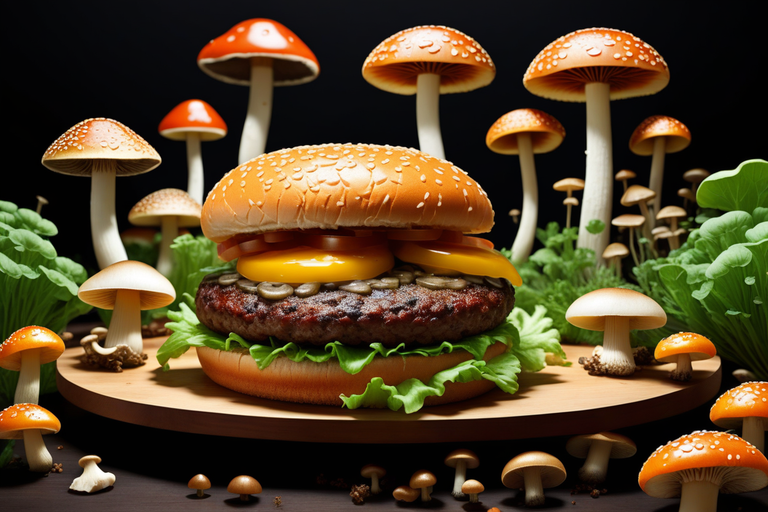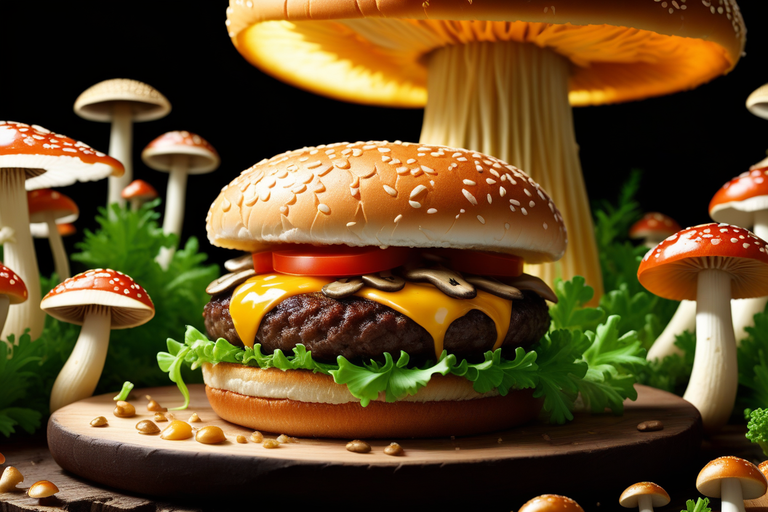Mycelium meat, a revolutionary alternative to traditional animal-based protein, is produced by fermenting fungi like mushrooms. With its high protein content and rich umami flavor, mycelium meat offers a sustainable and nutritious option for both human consumption and animal feed. This innovative food source not only addresses the growing demand for plant-based diets, but also provides a solution to the environmental impact of intensive livestock farming. By reducing the reliance on animal agriculture, mycelium meat can significantly lower greenhouse gas emissions and minimize land and water usage, contributing to a healthier planet for future generations.
Furthermore, mycelium meat has the potential to improve animal welfare by decreasing the need for mass production of livestock. As an ethical alternative to conventional meat products, this mushroom-based protein offers a humane solution that aligns with a compassionate approach toward animals. Its low ecological footprint makes it an attractive choice for those seeking sustainable dietary options while promoting the well-being of animals. By embracing mycelium meat as a viable source of nutrition, we can create positive ripple effects that benefit not only our health but also that of all living beings on Earth.

Mycelium meat, also known as mycoprotein or fungal meat, is indeed a promising alternative to traditional meat with potential benefits for the environment, animal welfare, and human health. Here’s how it’s created:
1. Spore Selection:
It all starts with choosing the right fungal strain. Not all fungi are edible, and some have undesirable textures or flavors. Companies like Quorn and MycoTechnology focus on fungi like Fusarium graminearum and Aspergillus oryzae, known for their fast growth and meat-like qualities.
2. Fermentation:
The selected fungal spores are then fed a nutrient-rich broth made from agricultural waste like sawdust, straw, or sugarcane bagasse. These materials are readily available and sustainable, unlike the land and water resources required for raising livestock.
3. Mycelial Growth:
Under controlled conditions of temperature, humidity, and oxygen, the fungi rapidly grow their delicate thread-like filaments, called hyphae, which form a dense network known as mycelium. This “fungal farm” takes just a few days to reach maturity.
4. Harvesting and Processing:
Once grown, the mycelium is harvested, dried, and ground into a flour-like powder. This versatile base can be further processed into various forms, depending on the desired meat alternative:
- Whole cuts: By shaping the mycelium powder into specific molds and binding it with natural ingredients like pea protein or cassava starch, companies can create realistic-looking steaks, fillets, and nuggets.
- Mycelium meat fillets
- Ground “meat”: Mycelium powder can be seasoned and textured to resemble ground beef, pork, or poultry for use in burgers, sausages, and meatballs.
- Mycelium meat ground
- Fungal ingredients: Mycelium extract can also be used as a meaty flavoring or protein source in various plant-based products like veggie burgers, soups, and snacks.
5. Flavoring and Finishing:
Finally, the mycelium product is flavored, colored, and cooked to mimic the taste and texture of traditional meat. Different companies have their own proprietary techniques for achieving this, using natural plant-based ingredients and cooking methods.
By harnessing the power of fungi, mycelium meat offers a compelling alternative to conventional meat production. It’s still in its early stages, but with continued research and development, this innovative food technology has the potential to revolutionize the way we feed ourselves and our planet.
Final Thoughts
Mycelium meat represents a groundbreaking innovation with the potential to revolutionize our food system and positively impact the environment. Its ability to provide a sustainable, vegan, cruelty-free alternative to traditional meat products offers hope for addressing the challenges of climate change and animal welfare. By embracing mycelium meat, we can reduce our ecological footprint, promote ethical treatment of animals, and contribute to a healthier planet for future generations. It is imperative that we continue to support research and development in this area and advocate for its widespread adoption. Let’s come together to embrace this promising solution and pave the way for a more sustainable and compassionate world.





